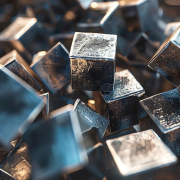In the world of gold and jewelry, terms like “18K” or “24K” are used to describe the quality and purity of gold. But do you really know what the “differences between 18K gold and 24K gold” are? If you intend to invest in gold, this article aims to provide a better and deeper understanding of these differences and to explore whether “24K gold is better than 18K gold.”
Factors Affecting the Price of 18K and 24K Gold
One of the key factors influencing the price of 18K and 24K gold is the percentage of gold in each karat. Specifically, 18K gold contains 75% gold and 25% other metals, while 24K gold is 100% pure gold. Therefore, the higher the percentage of gold, the higher the price will be.
Impact of the Global Market on Gold Prices: The global market also plays a significant role in determining gold prices. Any changes in gold prices in the global market immediately affect domestic gold prices. These changes can result from global economic fluctuations, wars, and sanctions.
Impact of Currency Rates on Gold Prices: Currency rates also influence gold prices. When currency rates rise, gold prices increase, and when currency rates fall, gold prices decrease. This is because gold acts as a valuable asset that protects against currency fluctuations.
Impact of Supply and Demand on Gold Prices:The levels of supply and demand for gold also affect its price. Whenever demand for gold increases while supply is low, the price of gold rises, and conversely, when supply exceeds demand, the price of gold falls.
Comparing 18K Gold and 24K Gold
When choosing the type of gold, several factors should be considered, with one of the most important being the karat of the gold. The karat refers to the purity of the gold. 24K gold is the purest form of gold and contains no other metals. On the other hand, 18K gold consists of 75% gold and 25% other metals. Which choice is better? To answer this question, you need to identify your needs and goals. If you are looking for gold with the highest market value, then 24K gold is the best choice. However, if you intend to use gold for making various types of jewelry, then 18K gold is a better option because it has greater durability due to the presence of other metals. Thus, 24K gold is more suitable for investment, while 18K gold is more suitable for jewelry making.
Uses of 18K and 24K Gold
Due to the high purity of 24K gold, this type of gold is considered the best choice for investment. 24K gold bars are available in packaged forms in the market. Interestingly, when purchasing a 24K gold bar, there is no need to pay any crafting fees. Additionally, gram-sized gold bars and coins are usually available starting from one-tenth of a gram in the market. However, if you have a limited budget, the Talasi gold purchasing app can help you buy even as little as one milligram of gold. 18K gold is commonly used in jewelry making due to its high strength. As you know, when purchasing ornamental gold, you need to pay not only for the seller’s profit but also for crafting fees.






